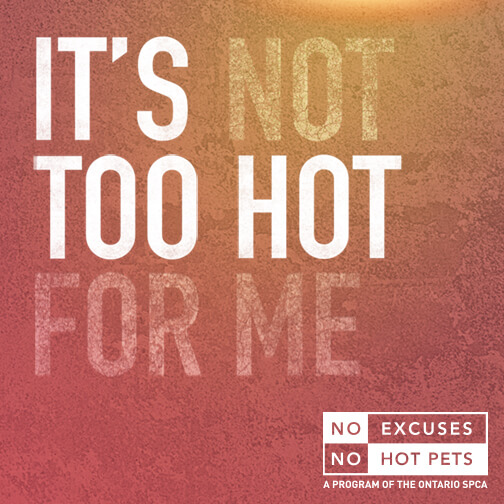Oh Baby It’s Hot Outside
Living in Southern Ontario means we often handle extreme heat. Dogs aren’t as good at dealing with it as we are. In the summertime, we have to watch out for things like heat stroke and burning paws on the hot sidewalk.
Never keep pets in cars or in direct sun on a summer day. In general, with plenty of water and shade, most dogs should be able to cope in warm temperatures, up to about 32˚C.

Some products that are available to help cope with heat are; cooling mats and collars like these available on Amazon. Or consider a raised bed, keeping your dog of the ground will be like chilling in a hammock.
Always make sure there’s fresh water available, and a cool spot for your furry friend to retreat to.
If you don’t have an air conditioner, sacrifice your fan and point it towards the ground. If you aren’t sure if your dog is getting enough water on those hot days, spike their water dish. Get some chicken broth or maybe some leftover tuna water and freeze it in an ice cube tray, put two or three ice cubes into your dog’s water bowl and they will be encouraged to get a nice cold drink.
Protect those precious paws; dog feet are stronger than ours however they aren’t a match for our shoes. If you’re not sure if the sidewalk is too hot, go with the rule of thumb and use your thumb. If you can’t keep your hand on the sidewalk for the count of 10 then your dog shouldn’t be walking on it. I, personally, take it even further and say if my feet can’t touch then neither do hers.

Know the signs of heat stroke; the most obvious sign is excessive panting, paired with signs of discomfort such as but not limited to; drooling, reddened gums, vomiting, diarrhea, mental dullness or loss of consciousness, uncoordinated movement, and collapse. If your dog shows any signs of heat stroke, contact your vet or an emergency veterinary clinic, immediately start trying to cool them down, and make sure the car you use to transport the dog has air conditioning and is already cold when you get them into it. Place cool water or damp towels in areas like their stomach and armpit as there is less fur. Arteries are closer to the surface here and will allow for more efficient cooling.
Don’t forget to protect vulnerable pets from the sun’s rays. The best thing to do is speak to your veterinarian about sunscreen or other forms of protection.
